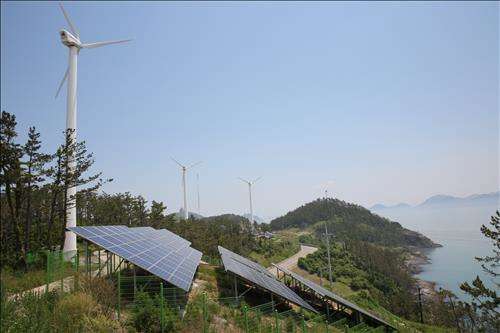 SEOUL JUNE 2ND – South Korea may have found an answer to its problems of energy shortages and an unstable power supply on an energy-independent island off the south coast, which could also help with its fight against climate change.
SEOUL JUNE 2ND – South Korea may have found an answer to its problems of energy shortages and an unstable power supply on an energy-independent island off the south coast, which could also help with its fight against climate change.
The country began developing energy-independent islands in 2009 as part of efforts to help ensure a stable supply of power in off-grid areas, mostly on small, offshore islands, but also to test its clean, renewable energy technology in real life.
One such island, which was completely off the country’s main grid but could generate enough electricity for its population through clean and renewable energy sources, was first realized in Gapado off the country’s southern resort island of Jeju in February 2014.
GASADO ISLAND
A second such island followed in Gasado just seven months later, but with more advanced technology and equipment, such as an energy management system that allows real-time adjustments to the mixture of energy sources, making it the country’s first true energy-independent island.
Gasado, located some 470 kilometers south of Seoul, uses wind and solar energy to generate about 81 percent of the power consumed by the island’s entire population of 168 households, or 280 people.
STORAGE ISSUES
The island still uses three 100-kilowatt diesel-powered generators as a backup power source in case the wind and solar power generators fail, but officials here from the state-run Korea Electric Power Corp. (KEPCO) said an island completely independent of fossil fuels was still possible.
“The only remaining issue is an economic one stemming from the high price of energy storage units,” said Song Il-keun, head of KEPCO’s microgrid research and business development center.
The island currently has an energy storage system with a capacity of 3 megawatt-hours, enough to supply the island’s entire consumption for one day.
An island completely independent of any fossil fuels will require at least two or three more such systems, each of which costs about 3 billion won (US$2.69 million), which currently is much more than the state-run power supplier or the island’s population can save from switching to clean, renewable energy.
However, such an island is not a far-off idea.
COST SAVINGS
Already, the cost of generating electricity with solar power has dipped to below that of generating power through diesel as of 2011, according to KEPCO.
In just seven months since switching to clean and renewable energy sources in September 2014, Gasado has saved some 150 million won ($134,600) as its use of diesel plunged more than 81 percent to 29,387 liters from the comparable period in the previous year.
The government is now moving to replicate such an apparent success on a much larger scale, starting on the eastern island of Ulleung that has a population of 10,673 people in some 7,900 households.
“Energy-independent islands are possible not only on physically isolated islands, but in any small areas or entities that may rely on independent power sources, such as schools, buildings and military bases,” said Na Seung-sik, head of the energy efficiency and climate change bureau at the Ministry of Trade, Industry and Energy.
CITIES NEXT
The official noted that technological advancements may also allow application of the technology to larger areas, such as cities.
Economic benefits are not the only reason the government is pushing to prove the need, if not the worth, of the so-called microgrid islands.
An 81 percent cut in the use of diesel on Gasado can be viewed as a significant drop in greenhouse gas emissions, according to KEPCO officials.
Such a reduction in emissions can certainly aid in the country’s efforts to voluntarily cut its greenhouse gas emissions by 30 percent from its business-as-usual levels by 2020, Na said.
“Clean and renewable energy cannot be viewed as the only or the most powerful way to fight climate change, but it certainly is one of the available means,” he added.
